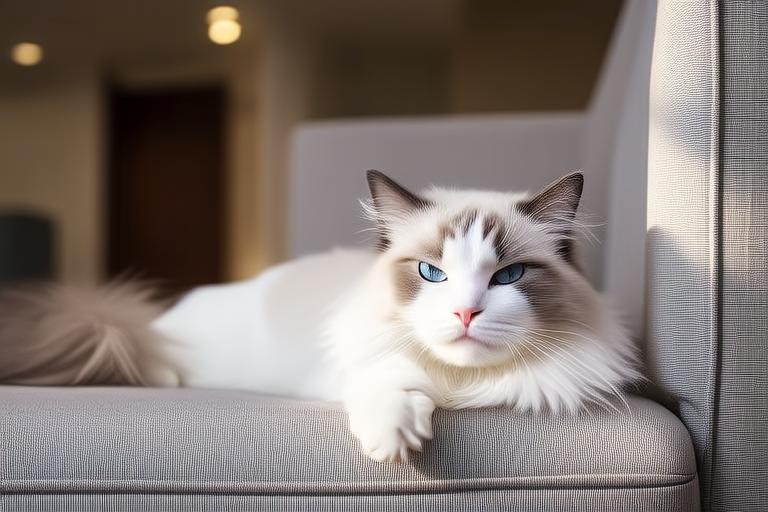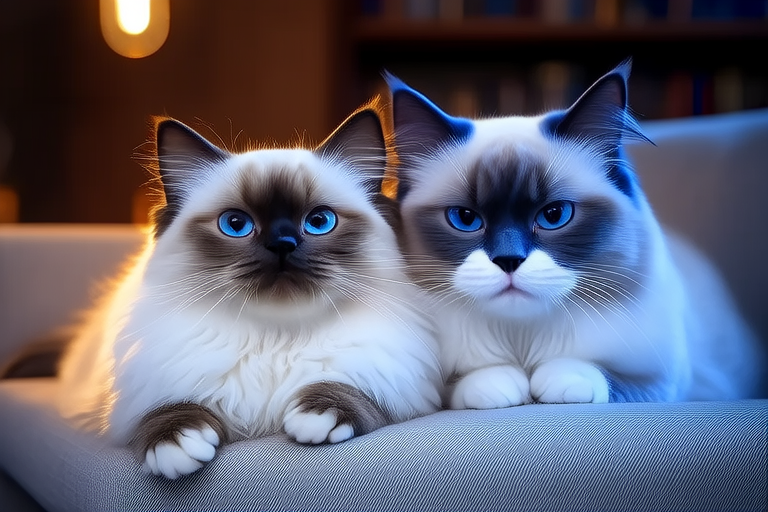
The Cozy Life of Ragdoll Cats: A Journey into Softness and Serenity
There is something undeniably soothing about the presence of a Ragdoll cat. Known for their affectionate nature and docile behavior, these felines have won the hearts of many cat enthusiasts around the world. With their plush coats and striking blue eyes, Ragdolls are not just pets but companions who bring a sense of calm and warmth into homes. This article delves into the unique traits of Ragdoll cats, their history, ideal living conditions, grooming needs, health considerations, and dietary preferences. Through personal anecdotes, we will explore how these serene creatures enrich the lives of those fortunate enough to share their homes.
Unique Traits of Ragdoll Cats
Ragdoll cats are often described as the ultimate lap cats due to their affectionate and laid-back personalities. They thrive on human interaction and are known to follow their owners from room to room, seeking out attention and affection. Unlike some breeds that can be more independent or aloof, Ragdolls are incredibly social and enjoy being part of family activities. Their docile demeanor makes them excellent companions for children and other pets, making them a popular choice for families.
One of the most charming aspects of Ragdoll cats is their tendency to go limp when picked up, a trait that gives the breed its name. This unique behavior is not only endearing but also highlights their trusting nature. Ragdolls seem to have an innate understanding of their owners’ moods and are often found offering comfort during stressful times. Their gentle purring and soft body language create an atmosphere of peace and relaxation, perfect for those seeking a cozy companion.
Physical Characteristics
Ragdoll cats are medium to large-sized cats with a robust yet elegant build. Their most distinctive feature is their plush, semi-longhair coat, which requires regular grooming to maintain its luxurious texture. The coat is typically dense and silky, coming in a variety of colors and patterns, including seal, chocolate, blue, lilac, and cream, often accompanied by points on the face, ears, paws, and tail. These striking color combinations add to their aesthetic appeal, making them a visual delight.
Beyond their coats, Ragdolls are recognized for their large, expressive blue eyes, which contribute to their enchanting appearance. These eyes, framed by long, sweeping eyelashes, give the impression of wisdom and serenity, enhancing the overall charm of the breed. The combination of their soft fur and captivating gaze creates a visually appealing image that is hard to resist.
History of the Breed
The origins of the Ragdoll breed trace back to the 1960s when Ann Baker, a breeder in California, began developing the breed. She selectively bred a white female cat named Josephine, who had a semi-longhaired coat and a tendency to go limp when picked up. Josephine was crossed with several male cats, including a Birman, a Burmese, and a Persian, resulting in offspring that exhibited the desired traits of affection, docility, and a relaxed demeanor.
Over time, Baker developed a strict breeding program and founded the International Ragdoll Cat Association (IRCA), ensuring the preservation and promotion of the breed. However, disagreements with the IRCA led to the formation of the Ragamuffin breed, which shares similar characteristics but has a different lineage. Despite this, both breeds continue to captivate cat lovers with their unique attributes.
Ideal Living Conditions
Ragdoll cats thrive in calm and peaceful environments, making them well-suited for households where they can enjoy a quiet, stable lifestyle. They adapt easily to indoor living and are content with a comfortable space that includes plenty of cozy spots for napping. While they are generally adaptable, providing them with a routine and consistent environment helps them feel secure and content.
Due to their gentle nature, Ragdolls are particularly compatible with families and other pets. They are patient and tolerant, making them ideal companions for children and other animals. Their friendly disposition means they are unlikely to engage in aggressive behaviors, making them a harmonious addition to multi-pet households. Their preference for tranquility also means they are less likely to be disturbed by household noises or disruptions, further contributing to their serene demeanor.
Grooming Needs
Maintaining the luxurious coat of a Ragdoll cat requires regular grooming to prevent matting and ensure their skin remains healthy. Weekly brushing is recommended to keep their fur smooth and free from tangles. Bathing may be necessary occasionally, especially if the cat has been outdoors or has encountered dirt. It is important to use a mild shampoo specifically formulated for cats to avoid irritating their sensitive skin.
In addition to coat care, regular nail trimming and dental hygiene are essential components of their grooming routine. Trimming nails every few weeks prevents overgrowth and discomfort, while maintaining good oral health through regular tooth brushing or professional cleanings ensures their overall well-being. Regular visits to the veterinarian are also crucial for monitoring their health and addressing any potential issues early.
Health Considerations
While Ragdoll cats are generally healthy, they are prone to certain genetic conditions that require vigilance. Hypertrophic cardiomyopathy (HCM) is one such condition, characterized by thickening of the heart muscle, which can lead to heart failure. Regular veterinary check-ups, including echocardiograms, can help detect HCM early and manage it effectively.
Ragdolls may also be susceptible to urinary tract infections, especially if they are fed a diet high in magnesium. Providing fresh water at all times and monitoring their litter box habits can help identify any issues early. Additionally, obesity is a common concern for indoor cats, so maintaining a balanced diet and encouraging moderate exercise are vital for their long-term health.





